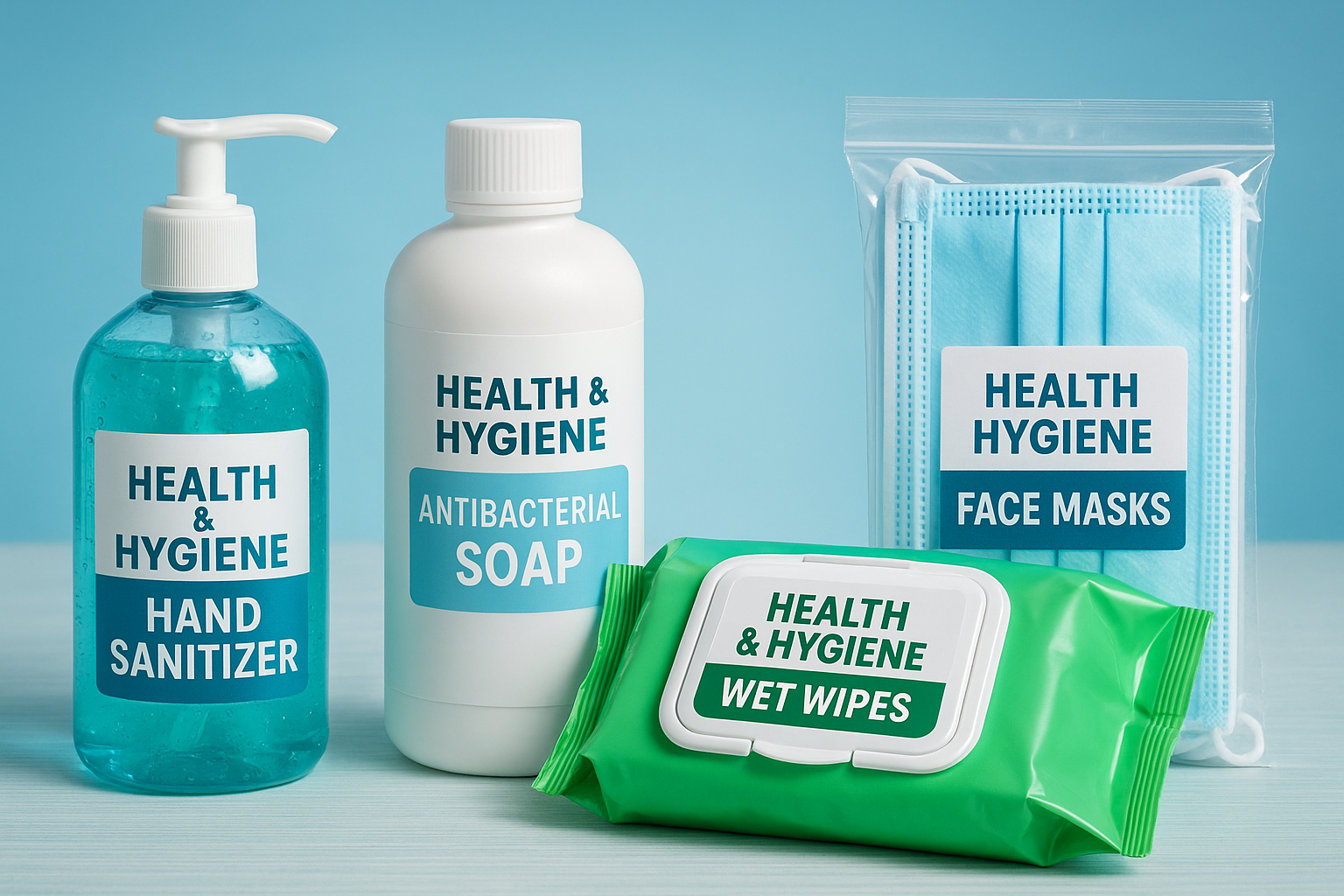Market Size & Forecast
-
In 2024, the global health & hygiene packaging market was valued around USD 119 billion.
-
Forecasts indicate growth to roughly USD 185–215 billion by the early 2030s, at a CAGR of ~5.7%–6.6%.
-
By 2025, the market is expected to reach USD 124.72 billion, growing to USD 210.71 billion by 2034 (CAGR ~6%).
Key Growth Drivers
-
Rising consumer demand for personal care, hygiene, and health-related products (e.g., sanitary wipes, adult incontinence, skincare, sanitizers) drives the need for specialized packaging.
-
The increase in single-use and portable formats, driven by convenience, e-commerce, and on-the-go lifestyles.
-
Strong regulatory and consumer focus on safety, contamination control, tamper evidence, and sterility, particularly in hygiene/health categories.
-
Sustainability concerns: packaging materials, recyclability, biodegradable options, and the circular economy are increasingly important.
Segmentation Overview
Product / Format
-
Product types include films & sheets, bags & pouches, laminates, labels, jars & bottles, sachets, and boxes & cartons.
-
Flexible packaging (pouches, films) dominates due to its lightweight nature, lower cost, and convenience.
-
Non-porous packaging structures ensure barrier properties and sterility, contributing to the dominant share in this segment.
End-Use / Applications
-
Key end-use industries include: Home care & toiletries; Personal care & cosmetics; Pharmaceuticals & OTC; Nutraceuticals & supplements; Functional beverages.
-
Among these, the home care & toiletries segment is projected to lead the market.
Geography / Region
-
North America and Europe currently have strong shares due to mature healthcare infrastructure and high per-capita hygiene spending.
-
Asia-Pacific is emerging strongly, driven by urbanization, rising disposable incomes, and an expanding personal care/hygiene market.
Key Trends & Innovations
-
Sustainable packaging materials: There is a shift from conventional plastics to recycled content, bio-based polymers, and mono-layer structures to improve recyclability.
-
Active & intelligent packaging: Incorporating sensors, antimicrobial coatings, and tamper-evident features, ensuring integrity in hygiene/health applications.
-
Flexible formats: Pouches, sachets, and slim packs are preferred for convenience, reduced material usage, and ease of shipping.
-
E-commerce and D2C distribution: Online sales of personal care and hygiene products are driving packaging solutions that are adapted to direct shipping, protective transport, and minimal damage.
Challenges & Restraints
-
The higher cost of advanced and sustainable packaging materials and manufacturing processes may limit adoption, especially in cost-sensitive markets.
-
The complexity of global regulations, stringent hygiene/sterility requirements, and the need for certification can increase entry and operational costs.
-
Recycling infrastructure and circular economy implementation are still nascent in many regions, which may hamper the shift to fully sustainable packaging.
Implications for the Packaging Industry
-
Packaging companies need to invest in material innovation, such as recycled content, bio-plastics, and antimicrobial films, to stay competitive.
-
Collaboration with brands in the hygiene and personal care space is crucial to co-develop packaging that meets both functional (protection, barrier) and emotional (premium look & feel) requirements.
-
Growth markets such as Asia-Pacific warrant strategic focus: localizing packaging solutions and cost-effective formats tailored to regional consumer habits.
-
Sustainability credentials are becoming a key differentiator: packaging designs that support brand ESG commitments will gain preference.
Outlook for India & the Region
-
The Indian subcontinent offers strong growth potential for health & hygiene packaging, driven by a rising middle class, increasing acceptance of premium personal care and hygiene products, and growing e-commerce penetration.
-
Local players may face pressure to provide cost-efficient solutions with hygiene compliance, as well as sustainable packaging options, to meet both domestic consumer demand and export opportunities.
Conclusion
The health & hygiene packaging market is poised for steady growth over the next decade, supported by robust demand in personal care, home hygiene, pharmaceuticals, and related sectors. The key to success will be packaging solutions that combine functionality (protection, barrier, tamper evidence) with consumer-driven features (convenience, premium feel, sustainability). Packaging manufacturers need to embrace material innovation, flexible formats, and sustainability while navigating cost pressures and regulatory complexity.
Source : https://www.towardspackaging.com/insights/health-and-hygiene-packaging-market-size


